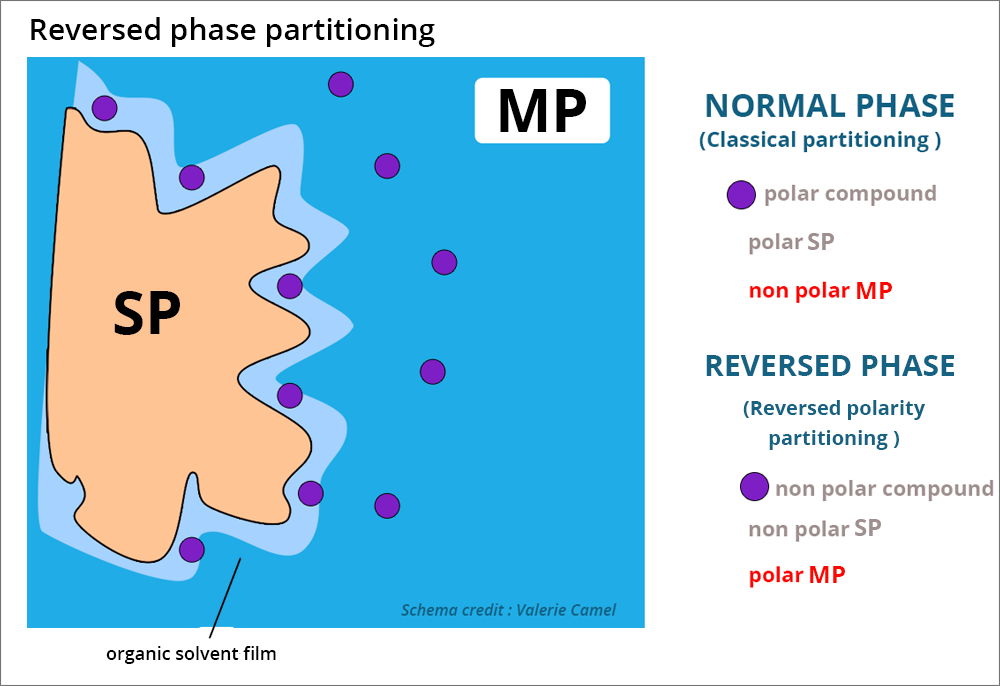Basics of HPLC
In partition chromatography, the compounds are partitioned between the mobile phase and a layer of organic solvent that impregnates the bonds of the stationary phase. According to the partitioning type, the principal interactions that come into play are either hydrophobicity or hydrosolubility.
Partition chromatography is based on the principle of “like dissolves like” which means that compounds and solvents of the same nature will have strong affinities.
- If the compound is hydrophilic, then the stationary phase will be hydrophilic and the mobile phase hypdrophobic ⇒ known as normal phase partitioning
- If the compound is hydrophobic, then the stationary phase will be hydrophobic and the mobile phase hydrophilic ⇒ known as reversed-phase partitioning

Depending on the composition of the mobile phase, the partitioning of compounds will be either in favor of the stationary phase (retention of the compounds) or the mobile phase (elution of the compounds). Compounds with the least affinity with the stationary phase will elute first.





